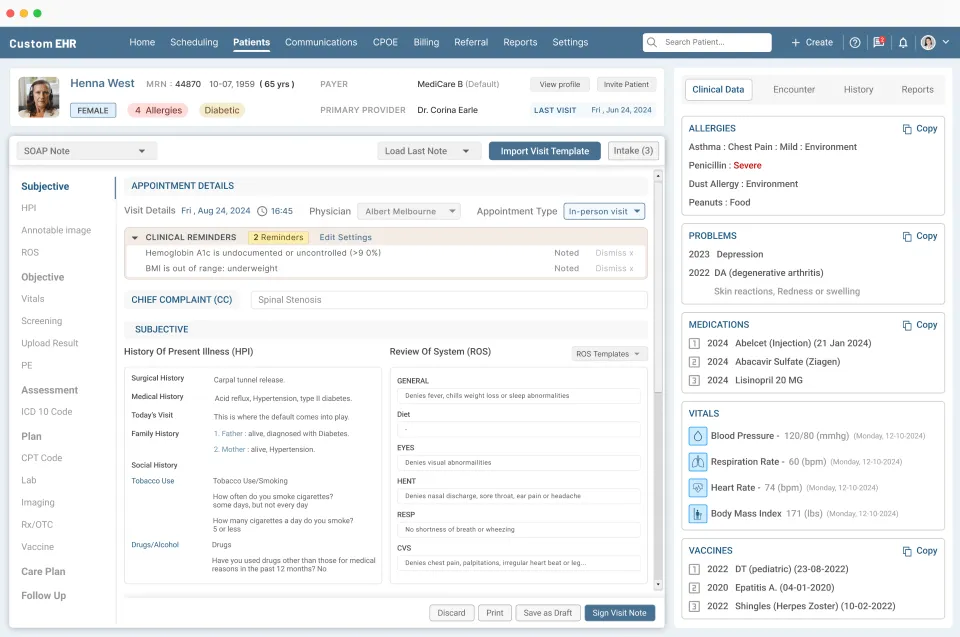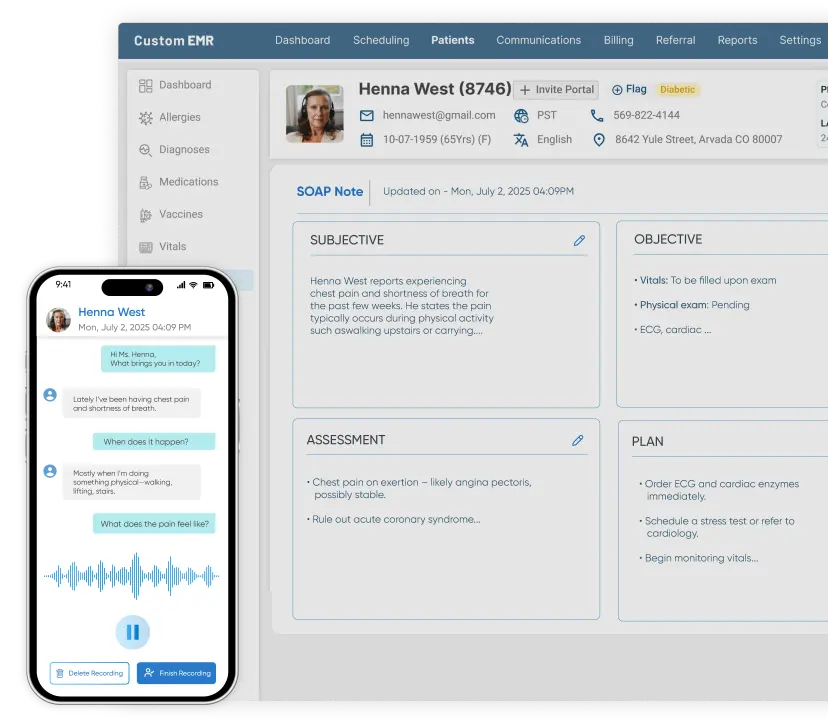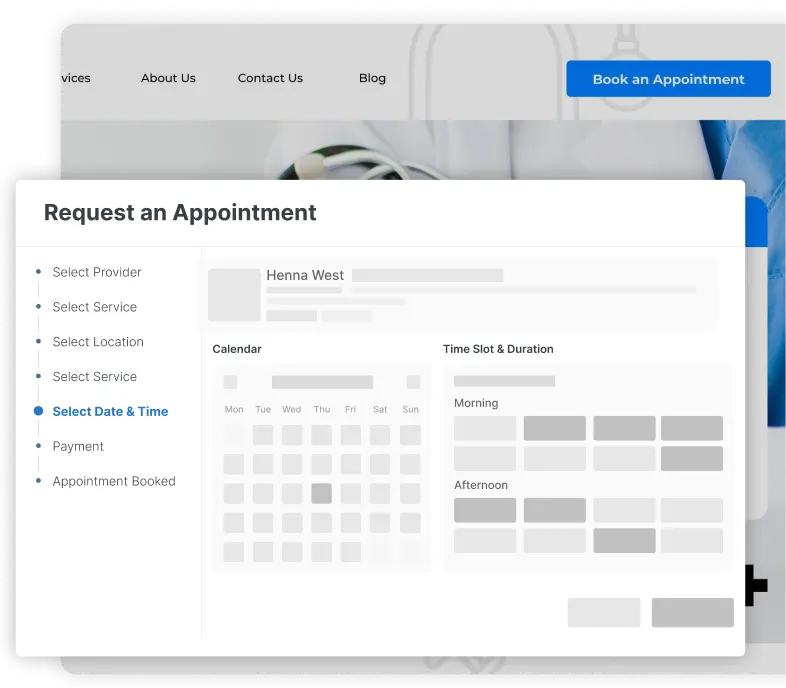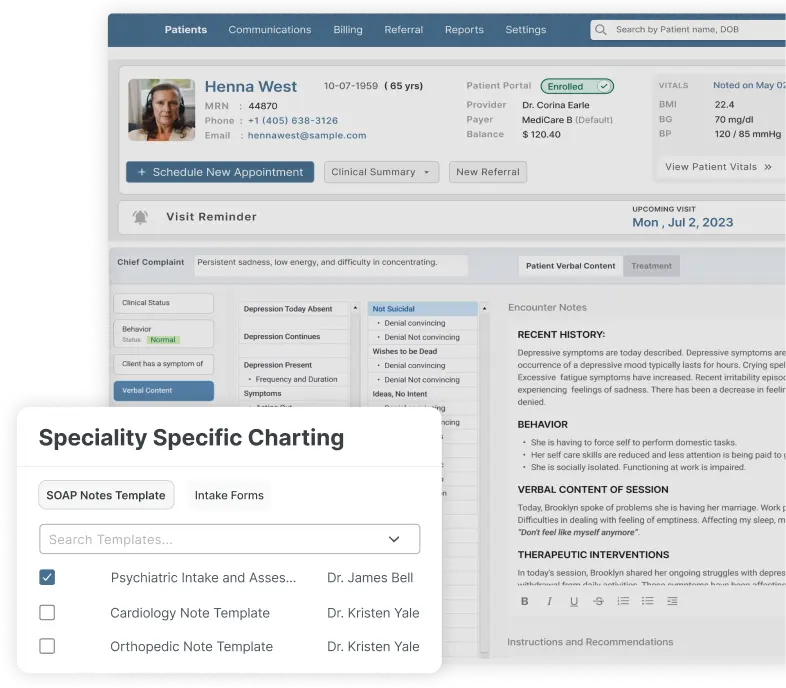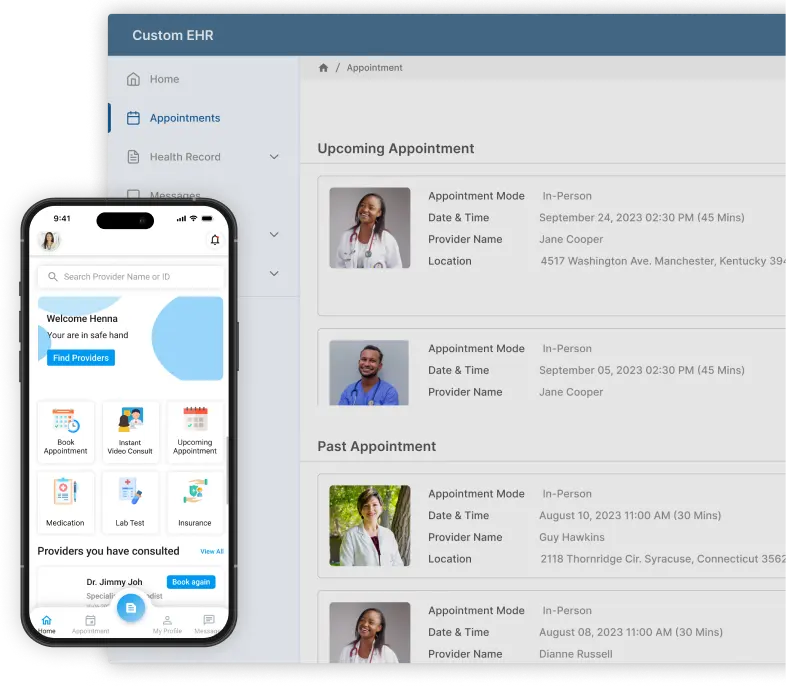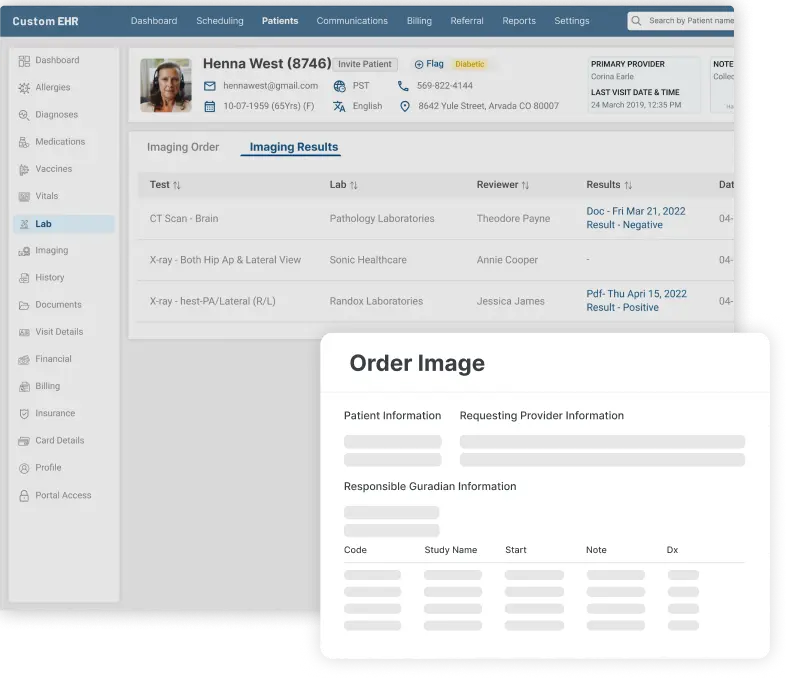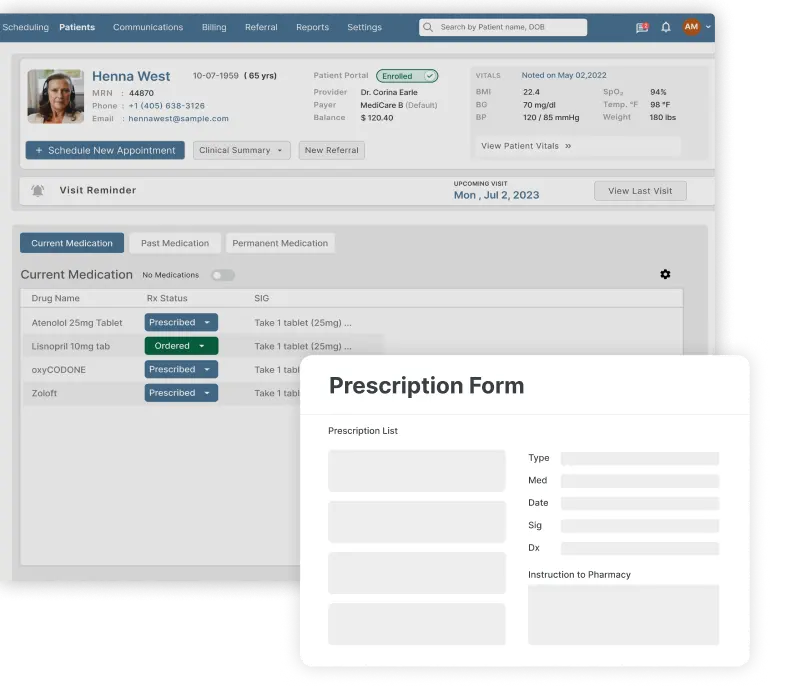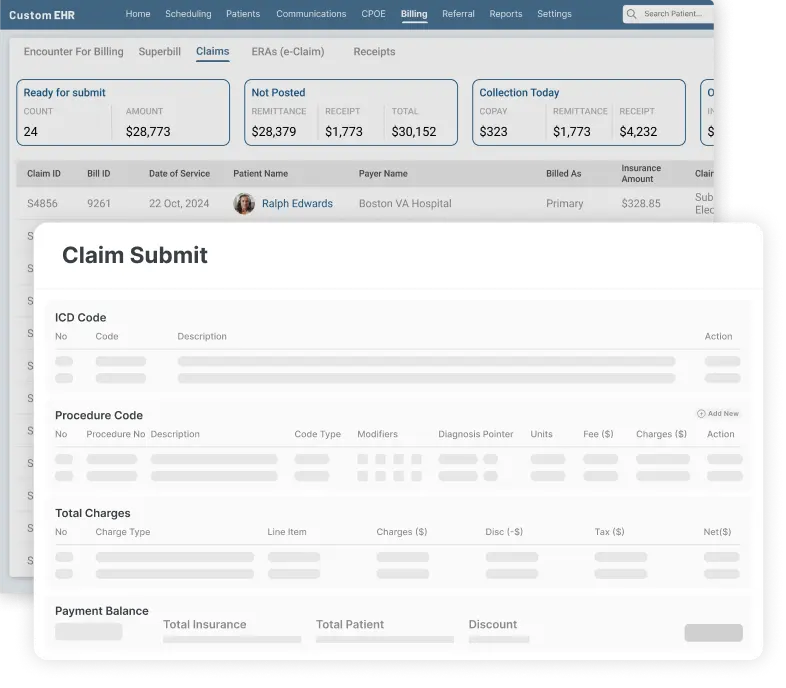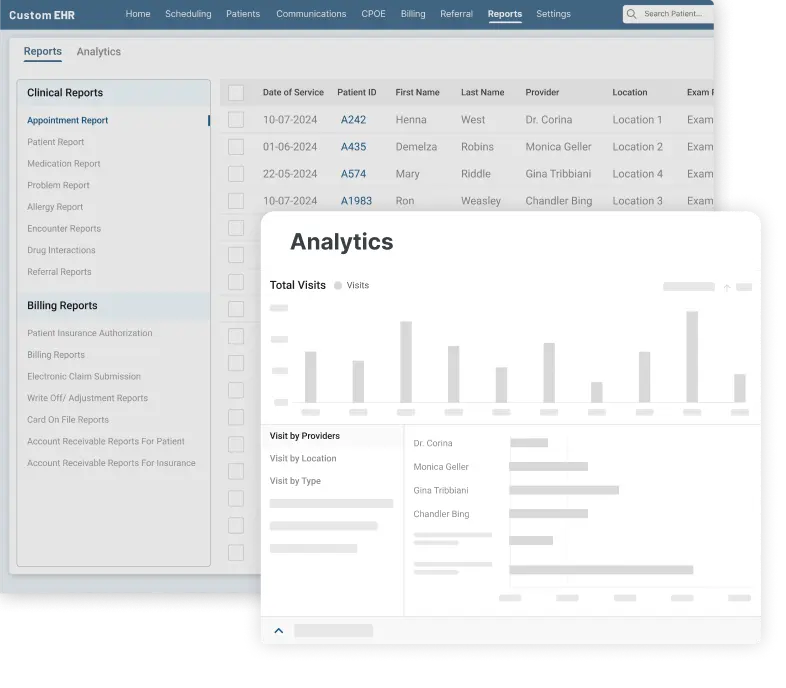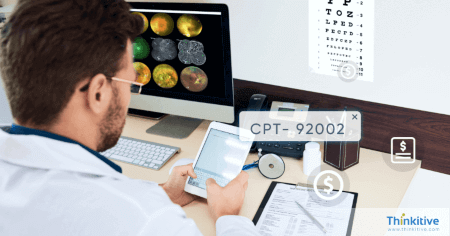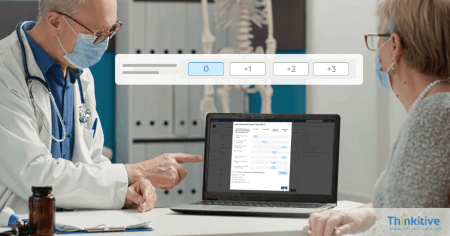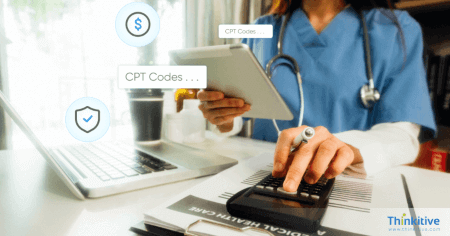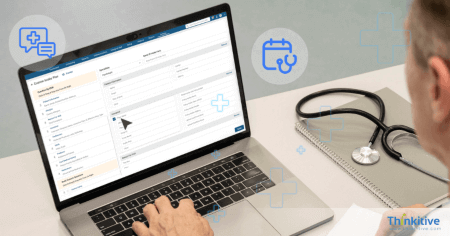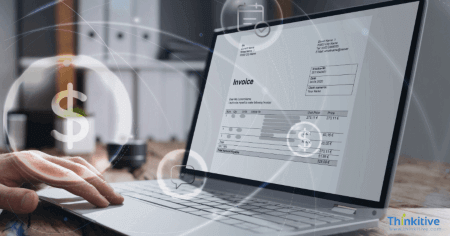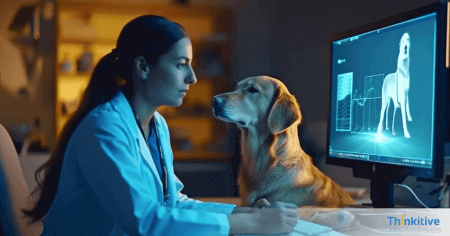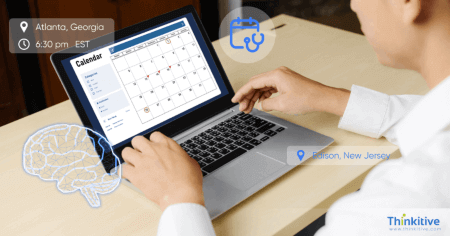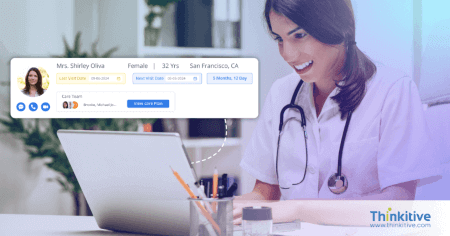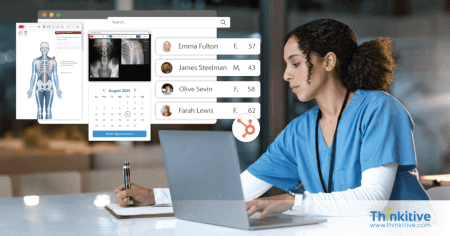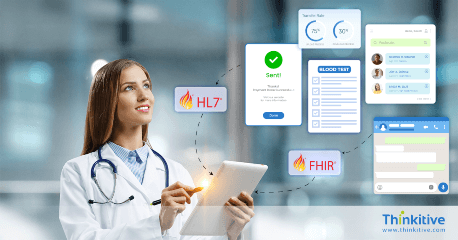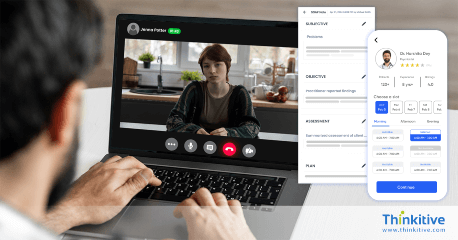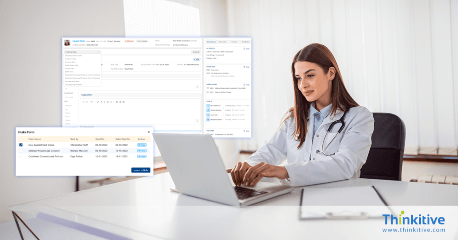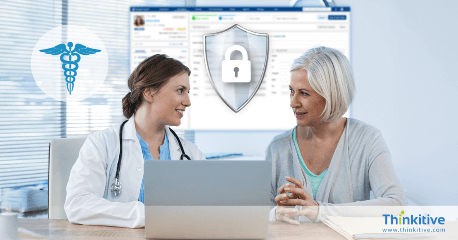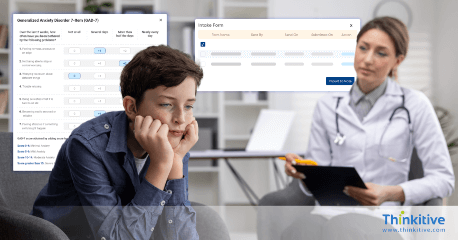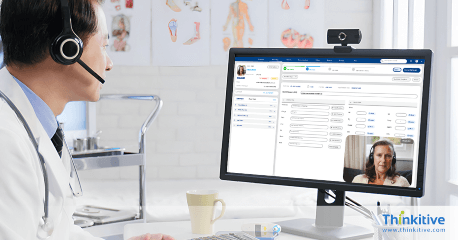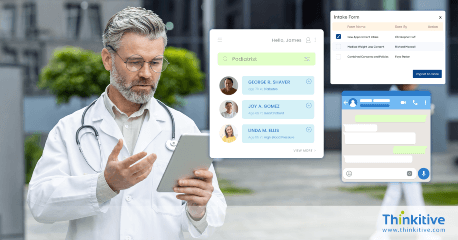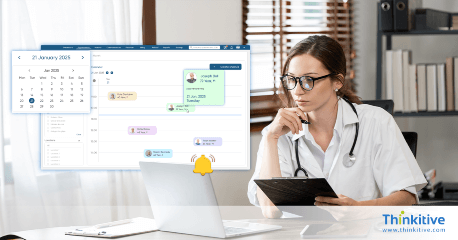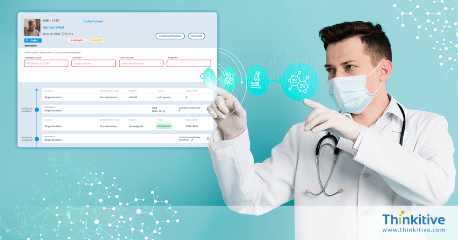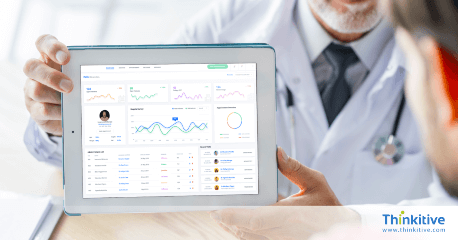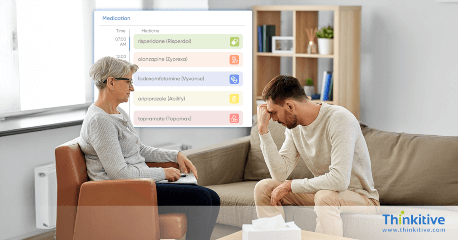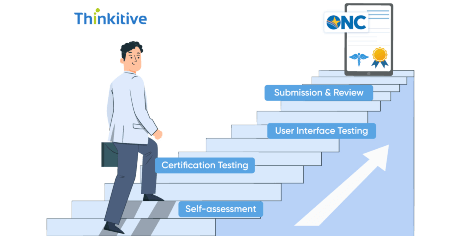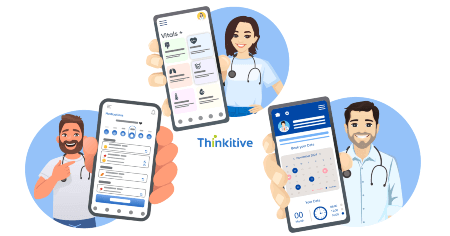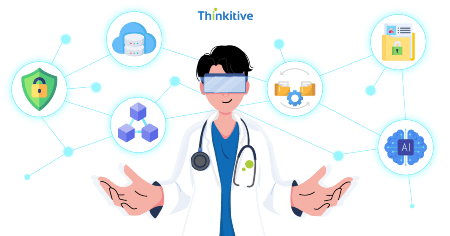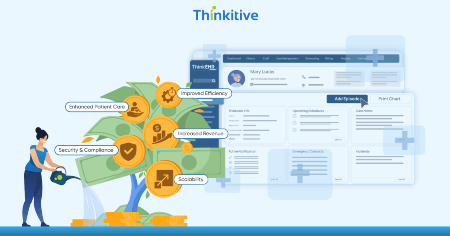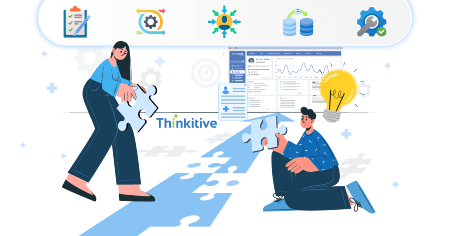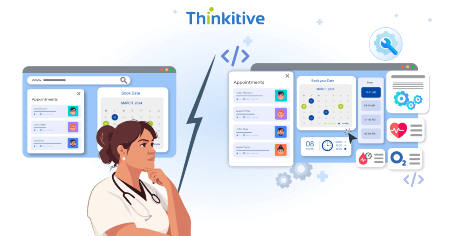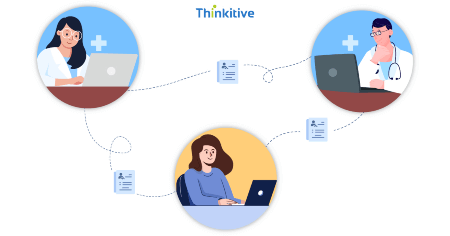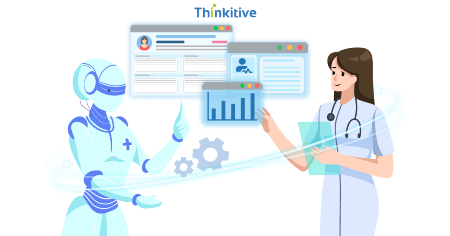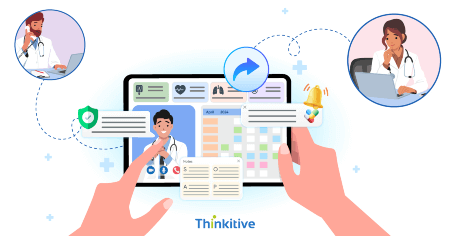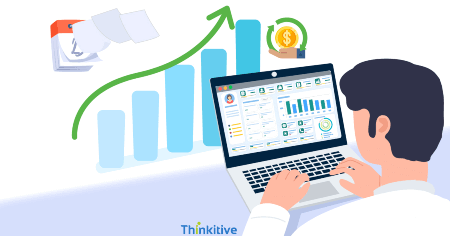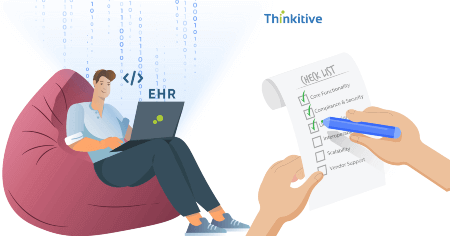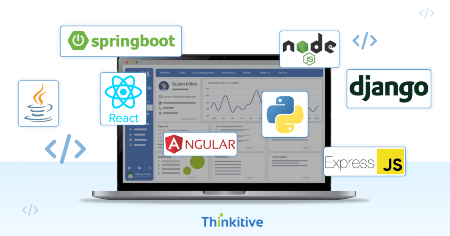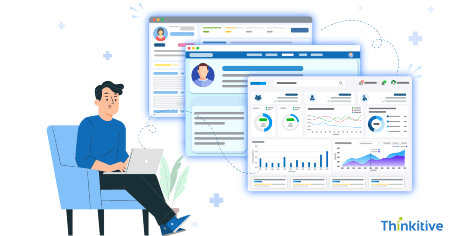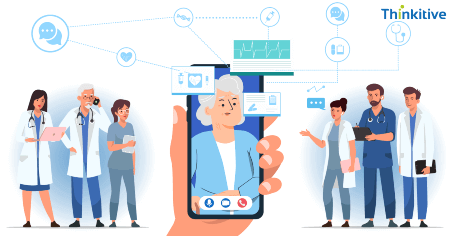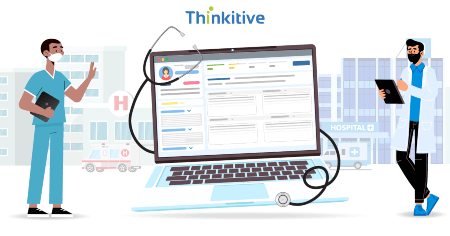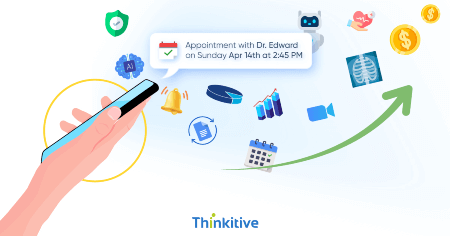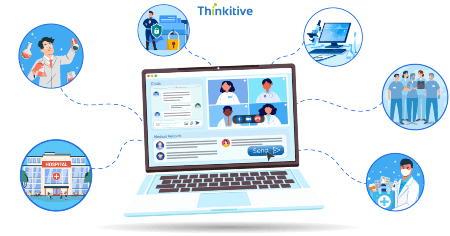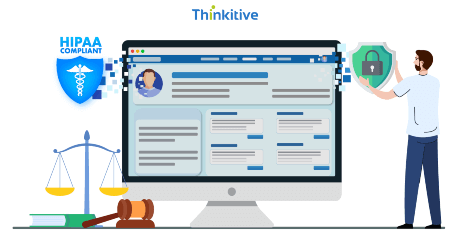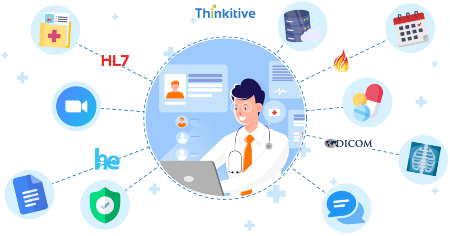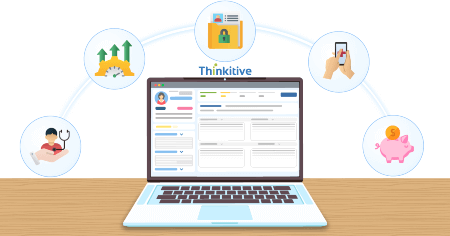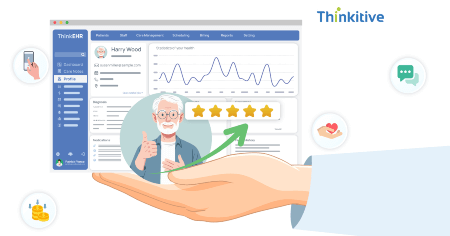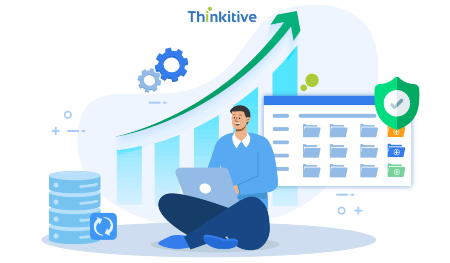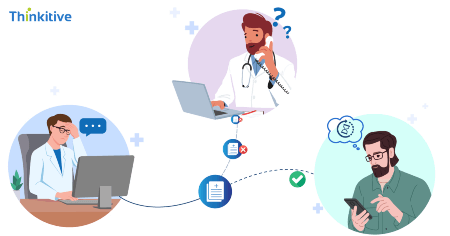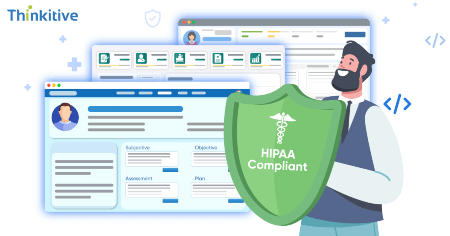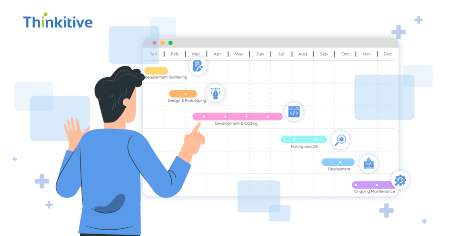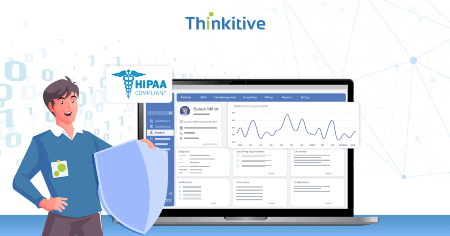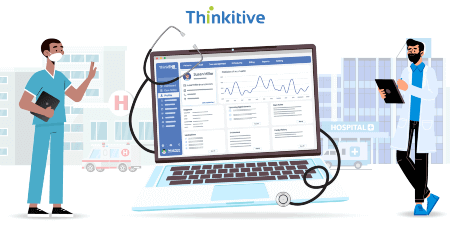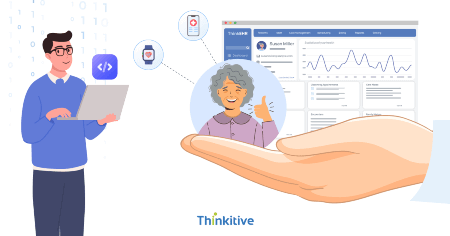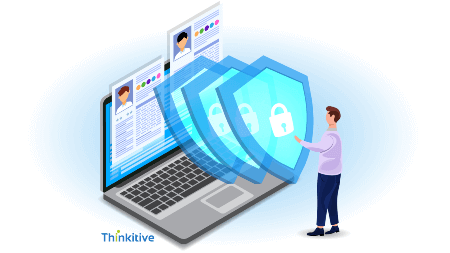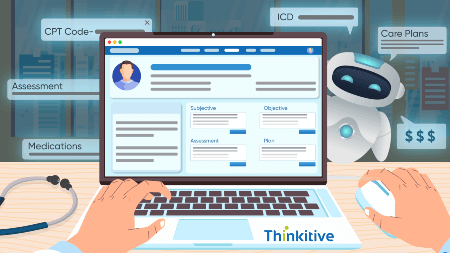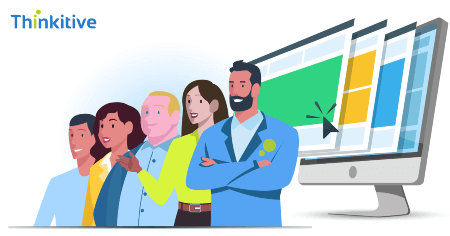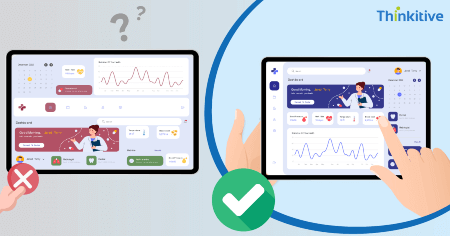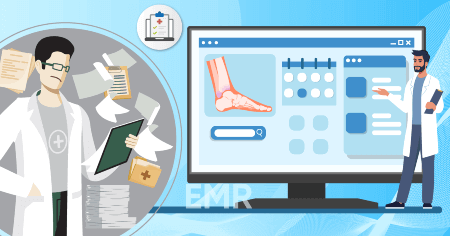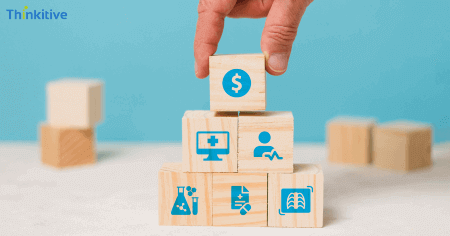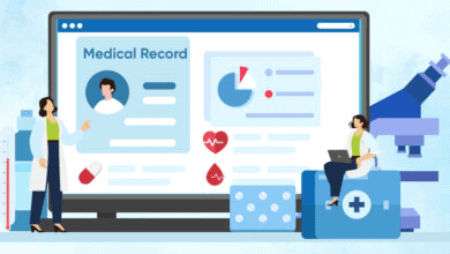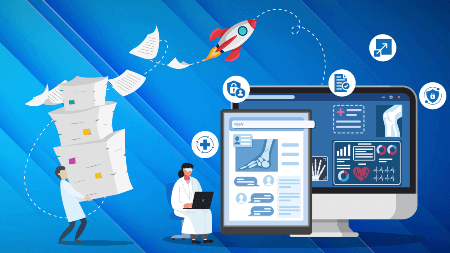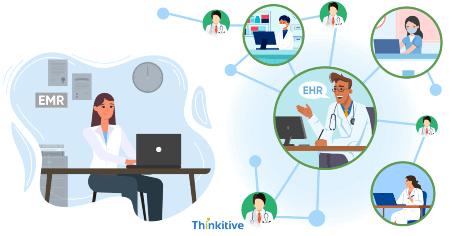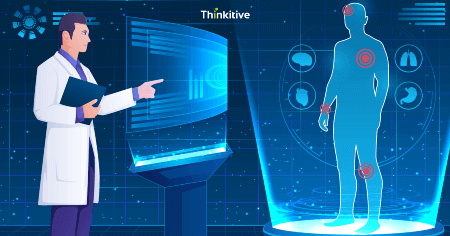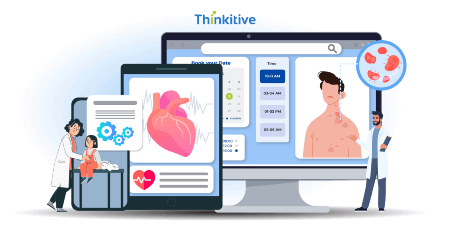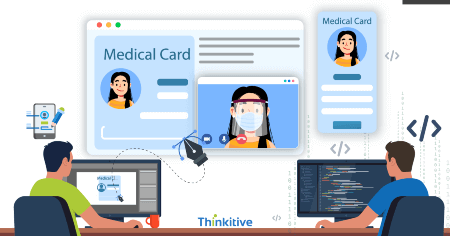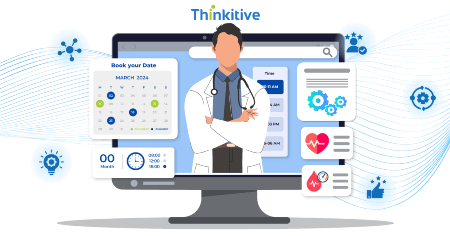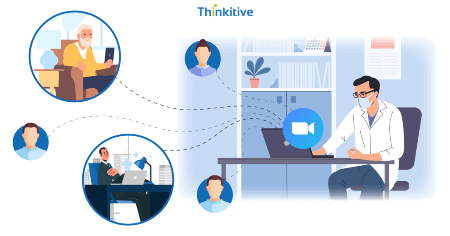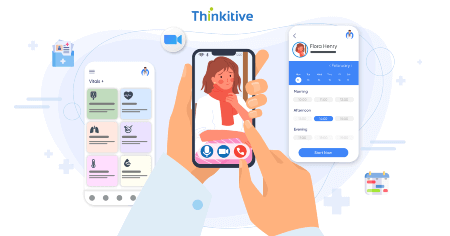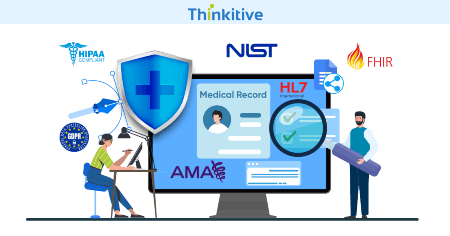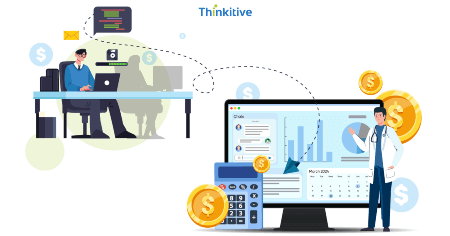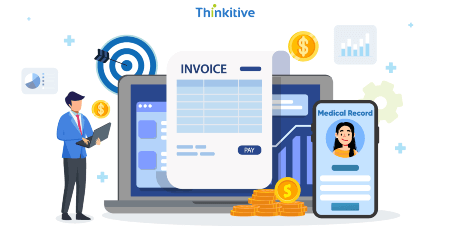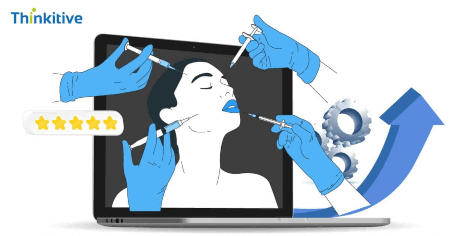"Operating two separate EHR systems was our daily nightmare at Bright Care Oklahoma. Therapy Appointment 2.0 handled our private clients beautifully, and Chart Caddy managed state insurance billing, but the constant switching between platforms was killing our productivity.... Off-the-shelf solutions couldn't bridge this gap - they either handled one billing type well or both poorly. Thinkitive's custom EHR was built specifically to unify these workflows. Now we have ONE system that captures the best features of both platforms while eliminating the inefficiencies. No more dual data entry, no more staff confusion, no more paying for two separate licenses"
Fully
Customizable EHR Features
for Your Clinical & Administrative Workflows
Move beyond your typical EHR system that stores, manages and shares patient information. With custom EHR software development, curate the unique features you need to match your workflows and power them with AI for ease and efficiency.
Calculate the Estimated Cost of EHR & EMR Custom Software Development
EMR vs EHR
Understand the Difference Before You Build
| Features | EMR Electronic Medical Records | EHR Electronic Health Records |
|---|---|---|
| Manage patient info | | |
| Track data over time | | |
| Spot health trends | | |
| Preventive care reminders | | |
| Treatment plan management | | |
| Multi-provider access | | |
| Coordinated care view | | |
| Supports value-based care | | |

CUSTOM EHR TESTIMONIES
Trusted by Leading Healthcare Providers & Healthtech Companies Across Multiple Specialities
200,000+ Healthcare Practitioners Trust Our Custom EHR Solutions




Join 125+ Clinics & 1,465+ Providers Who Trust Thinkitive




Specialty-Specific
Customizable EHR
Development for Your Practice
Tailor your custom EHR that adapts to your specialty's workflows, templates and care
requirements for uninterrupted care delivery and seamless administrative workflow
Our Specialities
Custom EHR solutions built for family medicine, internal medicine, and primary care providers.
20
Primary Care Custom EHR Delivered Successfully
Problems Providers Face with SaaS EHR
- Generic templates that don’t support AWV, CCM, diabetic exams, or multi-morbidity visits.
- No dashboards for chronic disease registries like DM, HTN, COPD, and CHF.
- Limited preventive-care workflows for screenings, immunizations, and risk assessments.
- Poor interoperability with labs, imaging, pharmacies, and external specialists.
- Weak medication reconciliation for polypharmacy and chronic medication adjustments.
- Inaccurate coding support for E/M complexity, HCC scoring, and multi-condition visits.
Custom EHR Solution
- Templates for AWV, SOAP, CCM, TCM, and multi-condition chronic visits.
- Chronic disease dashboards with A1C, BP trends, COPD/CKD tracking, and care pathways.
- Automated workflows for screenings, immunization forecasting, and risk assessments.
- Bi-directional integrations with labs, imaging, pharmacies, and referral networks.
- Advanced medication reconciliation with interaction checks and chronic monitoring.
- Intelligent coding for E/M levels, HCC risk adjustment, and precise CPT/ICD mapping.
Struggling with slow charting, chronic care gaps, or coordination challenges?
Book a demo and see how a Custom Primary Care EHR simplifies workflows, improves care continuity, and enhances patient outcomes.
Custom EHR solutions built for therapists, psychiatrists, psychologists, and behavioral health clinics.
30
Successful Mental Health & Psychiatry Implementations
Problem Providers Face with SaaS EHR
- No support for structured psychiatric evaluations, MSEs, or DSM-5 diagnostic workflows.
- Missing validated assessment tools (PHQ-9, GAD-7, HAM-A, MOCA, C-SSRS).
- Slow note-taking workflows that disrupt therapy flow and patient rapport.
- Weak privacy controls for sensitive notes, restricted access data, or psychotherapy records.
- Poor telepsychiatry integration for remote therapy and medication management.
- Limited longitudinal treatment tracking for recurring sessions and chronic mental health conditions.
Custom EHR Solution
- Templates for psychiatric evaluations, MSEs, psychosocial histories, and DSM-5 documentation.
- Built-in tools for PHQ-9, GAD-7, C-SSRS, ADHD scales, and outcome-based assessments.
- AI-assisted session note generation aligned with therapeutic modalities.
- Granular privacy controls for sensitive notes, restricted access, and compliance.
- Integrated telepsychiatry with secure video, messaging, and remote medical management.
- Longitudinal treatment workflows with progress tracking and recurring-session management.
Struggling with slow documentation, privacy concerns, or teletherapy limitations?
Book a demo to see how a Custom Mental Health EHR streamlines documentation, protects sensitive records, and supports seamless therapy workflows.
Custom EHR solutions built for walk-in clinics, emergency centers, and urgent care providers.
7+
Urgent Care EHR Software Development Projects Successfully Delivered
Problem Providers Face with SaaS EHR
- Rigid templates not suited for acute injuries, infections, lacerations, and episodic visits.
- No fast triage support for acuity levels (ESI), vitals, or rapid clinical decisions.
- Limited integrations for POC testing, rapid labs, X-rays, and urgent imaging.
- Slow discharge workflows that delay patient turnover and room availability.
- Fragmented histories due to walk-ins without prior clinical data access.
- Inadequate coding for urgent care CPTs, procedures, and episodic billing.
Custom EHR Solution
- Acute-care templates for lacerations, sprains, URIs, fractures, burns, and minor emergencies.
- Built-in triage workflows with ESI scoring, rapid vitals, and chief-complaint-based protocols.
- Integrations for POC tests, rapid strep/flu/COVID assays, X-ray, and basic imaging.
- Fast discharge workflows with automated instructions, ePrescriptions, and follow-ups.
- Smart intake tools retrieving prior records from HIEs to avoid missing history.
- Optimized episodic billing with CPT/ICD automation for urgent care visits.
Struggling with long wait times, slow charting, or inefficient patient turnover?
Book a demo and see how a Custom Urgent Care EHR accelerates triage, improves patient flow, and increases daily visit capacity.
Custom EHR solutions built for physical therapists, rehabilitation centers, and outpatient therapy clinics.
4+
Physical Therapy Custom EHR Delivered Successfully
Problems Providers Face with SaaS EHR
- Generic templates that fail to capture ROM, MMT, gait analysis, and functional tests.
- No structured support for individualized treatment plans or therapeutic exercise programs.
- Slow note-taking during sessions disrupts patient engagement and treatment flow.
- Limited integrations with motion analysis tools, EMG systems, or PT-specific devices.
- Poor scheduling for recurring therapy sessions and multi-week treatment cycles.
- Inaccurate billing support for PT modifiers, timed CPT codes, and authorization tracking.
Custom EHR Solutions
- PT-specific evaluation templates for ROM, MMT, special tests, and functional outcome measures.
- Customizable treatment plan workflows with goals, frequencies, and therapeutic activities.
- AI-assisted documentation for SOAP notes and progress reports during or after sessions.
- Integrations for gait analysis, motion capture tools, imaging, and PT equipment.
- Scheduling workflows for recurring appointments, progress checks, and long-term plans.
- Optimized billing with automatic time-based coding, modifiers, and authorization reminders.
Struggling with slow notes, poor progress tracking, or scheduling inefficiencies?
Book a demo and see how a Custom Physical Therapy EHR streamlines evaluations, improves documentation, and boosts patient outcomes.
Custom EHR solutions built for wound care clinics, home health teams, and chronic wound specialists.
6+
Wound Care EHR Software Development Projects Successfully Delivered
Problems Providers Face with SaaS EHR
- Templates not built for wound staging, measurements, exudate documentation, or NPUAP/Wagner classification.
- No structured workflows to capture serial wound photos and track healing progression.
- Poor support for complex wound care plans—debridement, dressings, compression, offloading.
- Limited integrations with vascular studies, Doppler tests, and diagnostic imaging.
- No coordinated workflows for multidisciplinary wound teams, home health, or podiatry.
- Billing inaccuracies for debridement CPTs, supplies, procedures, and chronic care management.
Custom EHR Solutions
- Wound assessment templates with staging, size measurements, tissue type, and drainage documentation.
- Serial photo capture workflows with side-by-side comparisons and healing trend analysis.
- Customizable treatment plans—debridement, dressing changes, compression therapy, offloading protocols.
- Integrations for Doppler ABI, vascular testing, imaging, and lab orders.
- Coordinated workflows for wound nurses, podiatrists, home health teams, and specialists.
- Automated coding for debridement, wound care procedures, supplies, and chronic care visits.
Struggling with inconsistent wound documentation, slow healing tracking, or poor care coordination?
Book a demo to see how a Custom Wound Care EHR standardizes assessments, tracks healing, and strengthens multidisciplinary care.
Custom EHR solutions built for ophthalmologists, eye care clinics, and vision testing centers managing comprehensive ocular diagnostics.
12+
Ophthalmology Custom EHR Delivered Successfully
Problems Providers Face with SaaS EHR
- Templates not designed for slit-lamp exams, fundus findings, OCT reports, or visual acuity workflows.
- Limited integrations with OCT, fundus cameras, visual field analyzers, topographers, and pachymeters.
- Poor support for documenting refractive errors, IOP trends, and post-op follow-ups.
- Inefficient image capture, storage, and comparison workflows for serial retinal imaging.
- No structured workflows for cataract, glaucoma, diabetic retinopathy, or retina-specific care.
- Billing challenges for ophthalmology-specific CPT codes, diagnostic tests, and surgical procedures.
Custom EHR Solutions
- Eye exam templates for slit-lamp, fundus, OCT, VA, refraction, IOP, and Amsler grid documentation.
- Device integrations for OCT, visual fields, fundus cameras, autorefractors, and corneal topographers.
- Trend analysis tools for IOP, RNFL thickness, macular scans, and disease progression.
- Structured imaging workflows for capturing, labeling, and comparing retinal images over time.
- Care-specific modules for glaucoma, cataracts, retina conditions, dry eye, and corneal disorders.
- Automated coding for ophthalmology diagnostics, imaging, procedures, and post-op care.
Struggling with scattered imaging, slow documentation, or limited device integrations?
Book a demo to see how a Custom Ophthalmology EHR centralizes imaging, accelerates charting, and enhances diagnostic accuracy.
Custom EHR solutions built for orthopedic surgeons, musculoskeletal clinics, and sports medicine providers managing acute and chronic injuries.
18+
Orthopedics EHR Software Development Projects Successfully Delivered
Problems Providers Face with SaaS EHR
- Templates not designed for MSK exams, special tests, fracture assessments, or orthopedic imaging reviews.
- Limited integrations with X-ray, MRI, CT, ultrasound, and PACS systems essential for diagnosis.
- Inadequate support for documenting joint injections, casting, splinting, and minor procedures.
- No structured workflows for pre-op planning, surgical notes, and post-op follow-ups.
- Poor support for rehab coordination with PT/OT teams after orthopedic procedures.
- Billing inaccuracies for orthopedic CPTs, procedures, surgical bundles, and imaging add-ons.
Custom EHR Solutions
- Orthopedic templates for MSK exams, ROM tests, special tests, fracture classification, and injury documentation.
- Integrations with MRI, CT, X-ray, ultrasound, and PACS for seamless imaging review.
- Workflows for injections, aspirations, casting, splinting, and minor in-office procedures.
- Pre-op planning modules, intraoperative surgical notes, and structured post-op follow-ups.
- Coordination tools linking orthopedic care plans with PT/OT rehabilitation programs.
- Automated coding for orthopedic procedures, surgical CPT bundles, and diagnostic imaging.
Struggling with scattered imaging, complex surgical documentation, or MSK exam limitations?
Book a demo to see how a Custom Orthopedic EHR streamlines diagnostics, surgical workflows, and post-op coordination.
Custom EHR solutions built for internists, multispecialty internal medicine practices, and providers managing complex chronic conditions.
20+
Internal Medicine EHR Software Development Projects Successfully Delivered
Problems Providers Face with SaaS EHR
- Generic templates that don’t support multi-comorbidity visits or complex chronic disease management.
- No integrated dashboards for monitoring CKD staging, CHF progression, COPD control, or metabolic disorders.
- Poor tracking of longitudinal vitals, lab trends, and medication adjustments across multiple conditions.
- Limited workflows for geriatric assessments, risk scoring, frailty indexes, and functional evaluations.
- Weak coordination with cardiology, endocrinology, nephrology, and other specialists.
- Inaccurate coding support for high-complexity E/M visits and risk-adjusted documentation.
Custom EHR Solutions
- Templates for chronic disease visits, multi-condition management, annual exams, and geriatric assessments.
- Disease-specific dashboards for CKD, heart failure, COPD, metabolic syndrome, and endocrine disorders.
- Trend tracking for labs (A1C, eGFR, BNP), vitals, symptoms, and medication changes.
- Workflows for frailty scoring, cognitive screening, fall-risk assessments, and functional evaluations.
- Integrated care plans with cardiology, nephrology, endocrinology, and other specialty teams.
- Intelligent coding for complex E/M levels, risk scoring, and chronic care management.
Struggling with multi-condition visits, incomplete lab trends, or coordination gaps across specialties?
Book a demo to see how a Custom Internal Medicine EHR simplifies chronic care, enhances monitoring, and supports high-complexity decision-making.
Custom EHR solutions built for chiropractors, spinal care clinics, and musculoskeletal wellness providers.
10+
Custom Chiropractic EHR Software Development Projects Successfully Delivered
Problems Providers Face with SaaS EHR
- Generic templates that don’t support spinal exams, palpation findings, ROM assessments, or segmental dysfunction documentation.
- No structured workflows for chiropractic adjustments, mobilizations, manipulations, or soft-tissue therapies.
- Limited integrations with digital X-rays, motion studies, surface EMG, and posture analysis tools.
- Poor support for documenting treatment plans, visit frequency, and progress across multi-session care.
- Inadequate SOAP note customization for MSK complaints, neurologic findings, and functional impairments.
- Billing challenges for chiropractic CPT codes, timed procedures, and medically necessary documentation.
Custom EHR Solutions
- Templates for postural assessments, spinal exams, ROM tests, orthopedic tests, and neurological screening.
- Workflows for adjustments, manual therapy, mobilization, traction, myofascial release, and other modalities.
- Integrations with digital X-ray, motion analysis, sEMG, and posture evaluation systems.
- Structured treatment-plan tools for visit frequency, goals, therapeutic milestones, and re-evaluations.
- Highly customizable SOAP notes tailored to MSK findings and chiropractic techniques.
- Automated coding for chiropractic procedures, therapy modifiers, and documentation-linked CPT selection.
Struggling with slow SOAP notes, poor imaging integration, or limited chiropractic documentation?
Book a demo to see how a Custom Chiropractic EHR streamlines exams, supports treatment planning, and simplifies documentation.
Custom EHR solutions built for dermatologists, skin care clinics, and cosmetic dermatology practices managing medical, surgical, and aesthetic treatments.
12+
Custom Dermatology EHR Software Development Projects Successfully Delivered
Problems Providers Face with SaaS EHR
- Templates not designed for lesion mapping, dermatoscopic documentation, or differential skin assessments.
- No structured workflows for biopsies, excisions, cryotherapy, and dermatologic procedures.
- Limited support for high-resolution image capture, serial comparisons, and visual tracking.
- Inadequate tools for documenting chronic dermatologic conditions like psoriasis, eczema, acne, or rosacea.
- Poor cosmetic dermatology support—treatment plans, procedure history, injectables, and consent workflows.
- Billing challenges for dermatology CPTs, pathology integration, and multi-procedure coding.
Custom EHR Solutions
- Dermatology templates for lesion mapping, dermatoscopy findings, morphology, and skin condition scoring.
- Workflows for biopsies, cryotherapy, excisions, MOHS referrals, and other procedures.
- Integrated imaging with serial photo capture, comparison, and lesion-tracking.
- Chronic-condition modules with disease severity scoring and long-term progression tracking.
- Cosmetic dermatology features for injectables, lasers, peels, treatment logs, and consents.
- Automated coding for dermatology procedures, pathology orders, and multi-service encounters.
Struggling with scattered skin images, incomplete lesion tracking, or slow procedure documentation?
Book a demo to see how a Custom Dermatology EHR centralizes imaging, accelerates charting, and supports medical & cosmetic dermatology workflows.
Custom EHR solutions built for pediatricians, child health clinics, and adolescent care providers managing age-specific clinical needs.
15+
Custom Pediatric EHR Software Development Projects Successfully Delivered
Problems Providers Face with SaaS EHR
- Templates not built for age-specific exams, growth charts, developmental milestones, or pediatric ROS.
- No structured workflows for immunization schedules, vaccine forecasting, or VIS documentation.
- Poor support for documenting congenital conditions, behavioral issues, and chronic pediatric illnesses.
- Limited tools for newborn care, well-child visits, APGAR scoring, and early growth tracking.
- Inadequate parental communication workflows for consents, education, and follow-up care.
- Billing challenges for pediatric CPT codes, well-visit bundles, and vaccine administration.
Custom EHR Solutions
- Pediatric templates for newborn exams, well-child visits, milestone tracking, and age-specific assessments.
- Automated vaccine workflows with forecasting, VIS documentation, and immunization registries.
- Chronic-condition modules for asthma, ADHD, congenital conditions, and pediatric endocrinology.
- Tools for newborn care, APGAR scoring, jaundice monitoring, and early growth documentation.
- Parent-focused communication with consent forms, reminders, education materials, and care plans.
- Automated coding for pediatric visits, vaccinations, and procedure bundles.
Struggling with vaccine tracking, milestone documentation, or complex pediatric visit workflows?
Book a demo to see how a Custom Pediatric EHR streamlines well-child care, automates vaccinations, and supports age-specific clinical workflows.
Custom EHR solutions built for gastroenterologists, endoscopy centers, and digestive health specialists managing complex GI disorders.
10+
Custom Gastroenterology EHR Software Development Projects Successfully Delivered
Problems Providers Face with SaaS EHR
- Templates not designed for GI-specific exams, abdominal assessments, or Crohn’s/UC documentation.
- Limited workflows for endoscopy, colonoscopy, ERCP, EUS, and procedure reporting.
- Poor integration with imaging, pathology, and lab systems needed for GI diagnostics.
- No structured tracking for chronic GI conditions, stool studies, or long-term disease progression.
- Inefficient pre-procedure prep workflows and poor patient compliance tracking.
- Billing challenges for GI-specific CPT codes, procedures, sedation, and pathology add-ons.
Custom EHR Solutions
- GI templates for abdominal exams, GI ROS, IBS, IBD, GERD, liver disease, and acute conditions.
- Structured workflows for colonoscopy, EGD, ERCP, EUS, biopsies, and post-procedure documentation.
- Integrations with imaging, pathology, radiology, and lab systems for complete diagnostic review.
- Longitudinal tracking for IBD, IBS, hepatitis, pancreatitis, and chronic GI disorders.
- Pre-procedure workflows for bowel prep, instructions, confirmations, and follow-up reminders.
- Automated coding for GI diagnostics, procedures, biopsies, anesthesia, and pathology linking.
Struggling with scattered procedure reports, slow documentation, or poor endoscopy workflows?
Book a demo to see how a Custom Gastroenterology EHR streamlines endoscopy, enhances diagnostics, and improves chronic GI management.
Custom EHR solutions built for oncologists, cancer treatment centers, and infusion clinics managing complex cancer care workflows.
8+
Custom Oncology EHR Software Development Projects Successfully Delivered
Problems Providers Face with SaaS EHR
- Templates not designed for cancer staging (TNM), tumor markers, or oncology-specific assessments.
- No structured workflows for chemotherapy protocols, infusion orders, and regimen tracking.
- Poor integration with pathology, radiology, genomics, and treatment-planning systems.
- Limited support for longitudinal tracking of disease progression, response, and toxicity.
- Inadequate workflows for referrals, multidisciplinary tumor boards, and coordinated oncology care.
- Billing challenges for infusion coding, chemotherapy administration, and complex oncology CPTs.
Custom EHR Solutions
- Templates for TNM staging, oncology ROS, tumor markers, and symptom assessments.
- Structured workflows for chemotherapy cycles, infusion orders, dosing schedules, and toxicity monitoring.
- Integrations with pathology, radiology, PACS, biomarker testing, and genomic analysis platforms.
- Longitudinal tracking for remission, recurrence, treatment response, and disease progression.
- Collaboration tools for tumor boards, care coordination, referrals, and multidisciplinary plans.
- Automated coding for chemo administration, infusion services, and oncology procedure bundles.
Struggling with complex chemo workflows, scattered pathology reports, or incomplete cancer staging?
Book a demo to see how a Custom Oncology EHR streamlines chemotherapy, integrates diagnostics, and supports multidisciplinary cancer care.
Custom EHR solutions built for cardiologists, heart care clinics, and cardiovascular diagnostic centers managing acute and chronic cardiac conditions.
12+
Custom Cardiac EHR Software Development Projects Successfully Delivered
Problems Providers Face with SaaS EHR
- Templates not designed for cardiology exams, chest pain assessments, or cardiac ROS.
- Limited integrations with ECG/EKG, echocardiograms, stress tests, Holter monitors, and imaging systems.
- No structured workflows for documenting arrhythmias, heart failure staging, or ischemic evaluations.
- Poor visualization of longitudinal vitals, lipid panels, BNP, troponin, and cardiac biomarker trends.
- Inefficient coordination with cardiac rehab, electrophysiology, and interventional cardiology teams.
- Billing challenges for cardiology-specific CPT codes, diagnostic tests, and procedure bundles.
Custom EHR Solutions
- Cardiology templates for chest pain, HF staging (NYHA), arrhythmias, HTN, and risk assessments.
- Integrations with EKG, echo, stress tests, Holter monitors, CT angiography, and PACS.
- Structured workflows for cardiac imaging interpretation, rhythm monitoring, and ischemia evaluations.
- Longitudinal trend tracking for vitals, lipids, troponin, BNP, and medication adjustments.
- Tools for coordinated cardiology care—EP workflows, cath lab notes, and cardiac rehab plans.
- Automated coding for cardiac diagnostics, imaging, procedures, and interventional cardiology services.
Struggling with scattered cardiac tests, incomplete biomarkers, or inefficient diagnostic workflows?
Book a demo to see how a Custom Cardiology EHR centralizes imaging, accelerates reporting, and improves cardiovascular care delivery.
Custom EHR solutions built for neurologists, neurodiagnostic centers, and brain & spine clinics managing complex neurological conditions.
9+
Custom Neurology EHR Software Development Projects Successfully Delivered
Problems Providers Face with SaaS EHR
- Templates not designed for neurological exams, cranial nerve assessments, motor/sensory testing, or gait analysis.
- Limited integrations with EEG, EMG/NCV, MRI, CT, and advanced neuroimaging systems.
- No structured workflows for documenting seizures, stroke assessments (NIHSS), migraines, or movement disorders.
- Poor support for long-term tracking of MS progression, Parkinson’s symptoms, dementia scoring, or epilepsy control.
- Inadequate monitoring tools for medications requiring titration, levels, and frequent neurologic follow-ups.
- Billing challenges for neurodiagnostic procedures, EMG/EEG studies, and complex neurological evaluations.
Custom EHR Solutions
- Neurology templates for CN exams, reflex assessments, motor/sensory findings, coordination, and gait analysis.
- Integrations with EEG, EMG/NCV, MRI, CT, PET, and other neuroimaging platforms.
- Structured workflows for seizures, stroke documentation (NIHSS), migraines, neuropathies, and movement disorders.
- Longitudinal tracking for MS lesions, Parkinson’s UPDRS scores, dementia scales (MMSE/MoCA), and epilepsy episodes.
- Medication-monitoring workflows for titration, serum levels, adverse effects, and neurologic responses.
- Automated coding for neurodiagnostics, EEG/EMG procedures, and complex neurological E/M visits.
Struggling with scattered neuro tests, incomplete assessments, or slow imaging workflows?
Book a demo to see how a Custom Neurology EHR streamlines diagnostics, enhances neurological assessments, and supports long-term condition management.
Pre-Built Components to Speed-up Your
Custom EHR Software Development
One-Stop EHR solution for your speciality's unique needs, from medical billing to practice management
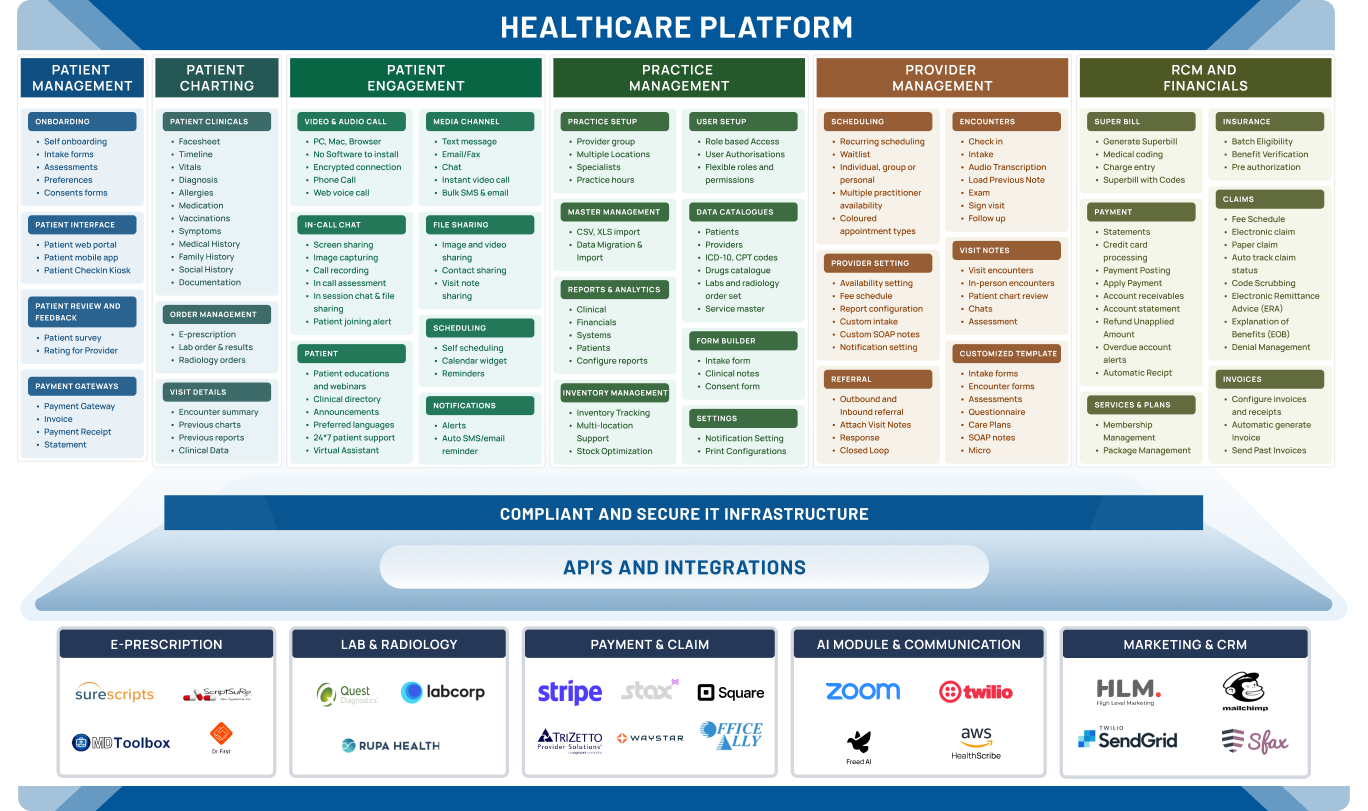
INTEGRATIONS
Empower Your Customizable EHR Software with 30+ Healthcare System Integrations
ePrescription & Labs Integration
Seamlessly integrate lab orders and ePrescriptions into your custom EHR ... during electronic health record development to improve clinical efficiency and reduce the overall cost of care for patients and providers.
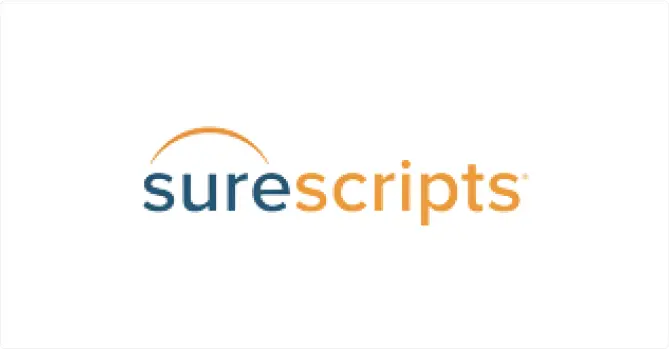
Surescripts
Integrate SureScripts into your custom EHR with secure ePrescription integration and real-time medication ... history access. Enable EPCS, streamline refill requests, and enhance clinical accuracy through HL7 FHIR EHR integration and custom EHR API development for seamless pharmacy workflows.
Billing & Payment
Safe, secure, and seamless healthcare transactions with our billing, ... payment, and point-of-sale integrations into your custom EHR. Give your virtual care practice a comprehensive real-life healthcare ecosystem.

Waystar
Integrate Waystar with your custom EHR to streamline eligibility checks, claims submission, ... and denial management. Enhance RCM performance using secure EHR API development and HL7 FHIR–powered billing integrations that accelerate reimbursements and reduce administrative workload.
Communication
Facilitate real-time communication with patients via multiple mediums, all ... from your custom EHR software. Give your virtual care practice a comprehensive real-life healthcare ecosystem.
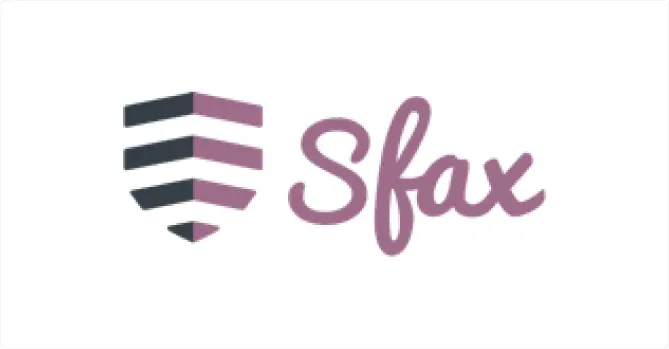
Sfax
Integrate Sfax with your custom EHR to send and receive HIPAA-secure faxes directly within ... provider workflows. Improve communication with labs, pharmacies, and specialists using HL7 FHIR EHR integration and custom EHR API development for encrypted document exchange.

EMR SYSTEM DEVELOPMENT QUOTE
Affordable Custom EHR Software Development Tailored to Your Budget
Avoid long-term subscription fees with a one-time custom EHR investment designed for cost-efficiency, scalability, and complete ownership.
Hire EHR Developers
Hire EHR developers to extend your team with experienced engineers ... skilled in HL7, FHIR, integrations, and custom workflows. Scale development quickly with dedicated resources from an EHR development company tailored to your project needs.
- Dedicated EHR Expertise
- Scale Your Team Quickly
- Cost-Efficient Development
- Faster Delivery & Iteration
Most Preferred
Custom EHR Software Development
Build a fully customizable EHR tailored to your specialty, ... workflows, and integration needs. Work with an EHR development company to create a scalable, compliant, and feature-rich solution that gives you complete ownership without recurring subscription limitations.
- 100% Workflow-Specific Build
- Full Ownership & No Subscription Fees
- Seamless Integrations
- HIPAA-Compliant & Scalable
White Label EHR
Launch your own branded EHR platform with a ready-to-use, ... fully customizable white-label solution. Accelerate time-to-market, reduce development costs, and offer a complete EHR product built by an experienced EHR development company.
- Launch Your Own EHR Product
- Reduce Development Time & Cost
- Full Branding Flexibility
- Built by an Experienced EHR Development Company
EHR CUSTOM SOFTWARE DEVELOPMENT PROCESS
7 Steps To Build Custom EHR Software
We specialize in niche EMR/EHR software development to build custom solutions tailored to your workflows, specialties, and practice needs.
- Stakeholders' interviews.
- Clinical and administrative workflow analysis.
- Defining business goals and technical constraints.
- Identifying compliance needs such as HIPAA, HITECH, ONC, etc.
- Creating a business case with ROI and TCO.
Discovery
(Duration: 2-4 Weeks)- Creating EHR user scenarios for different user groups in your practice.
- Wireframing and mapping the user journey.
- Creating high-fidelity mockups.
- User-centric design iterations.
- Usability testing for accessibility and clinical use.
Interactive UI/UX Designing
(Duration: 2-4 Weeks)- Unit and integration testing.
- Security and performance testing.
- Compliance validation.
- Usability and clinical feedback.
Rigorous Testing
(Duration: 3-5 Weeks)- Pilot launch in 2-3 weeks.
- Limited rollout for selected departments or users.
- Implement a feedback mechanism to gather user feedback.
- Continuous long-term maintenance planning and updates.
Pilot Launch, Support & Maintenance
(Duration: 2-3 Weeks)- Software requirement specification (SRS) and a feature list.
- Defining feature scoping for both ‘MVP’ and ‘Long-term’ features.
- Development roadmap for architecture, integrations, and tech stack.
- Sprints planning with milestones, KPIs, and budget.
- EHR certification planning.
Project Planning
(Duration: 2-3 Weeks)- Agile sprint-based coding.
- Modular development (e.g., patient charting, scheduling, billing, etc.).
- API and third-party service integrations.
- Regular demos with stakeholders.
Iterative Development
(Duration: 2-6 Weeks)- Data migration from existing systems.
- Staff training and documentation.
- Final quality assurance checks.
- Backup and rollback planning.
Pre-launch Preparation
(Duration: 1-2 Weeks)Why Custom EHR Software Development?
Move beyond limited scalability, rigid workflows, and reduced clinical efficiency. With EHR development, gain full control through purpose-built features, seamless integrations, and workflows designed around how your organization delivers care.
![]() Tailored to your Needs
Tailored to your Needs
Thinkitive's first step to developing ... customizable EHR software is to understand your unique needs and requirements. Based on that, our development team develops a customized software solution to meet your requirements and solve your problems.
![]() Ready-to-use Components
Ready-to-use Components
With our ready-to-use technology ...components like video conferencing, appointment, scheduling, and SOAP notes, fasten your custom EMR software development process.
![]() Third-party Integration
Third-party Integration
Integrate your EHR software with multiple... third-party systems like Telemedicine, RPM Devices, Labs, Radiology, etc., to build a complete virtual healthcare ecosystem.
![]() Affordable EHR Solutions
Affordable EHR Solutions
With our ready-to-use base EHR software ...framework, we give you an affordable custom EHR software solution specifically designed for your healthcare practice.
![]() In-Depth Domain Expertise
In-Depth Domain Expertise
With our ready-to-use base EHR ...software framework, we give you an affordable custom EMR software solution specifically designed for your healthcare practice.
![]() Timely Delivery
Timely Delivery
We have curated a development ...process that covers all the aspects of your healthcare practice's unique needs and requirements with transparency for on-time delivery.
All Your Custom EHR Requirements Under One Roof
Meet our talented 400+ EHR software developers and the EHR software development services that have to offer at one place. Make an informed decision and build the custom EHR software exactly the way you want.
Build Your EHR/EMR System
Know the complete structure of building your own EHR software system and the intricacies that are involved in it. Get free consultation to pinpoint your unique needs and how to address them.

EHR/EMR Development Team
Meet our expert panel of 400+ EHR software developers who will work alongside you to build the custom EHR software that you need for your practice and providers.

Frequently Asked Questions
Get Answer to all your Questions
Still have questions ?
| Challenges | Solutions |
|---|---|
| Regulatory Compliance | Working with healthcare compliance experts that uses HIPAA and GDPR ready frameworks to align with regulatory compliances. |
| Interoperability | Using HL7/FHIR standards with API integrations for seamless data exchange. |
| Legacy System Integrations | Using middleware and phased migration to integrate EHR systems with outdated systems. |
| Data Migration | Using automated tools with standardized mapping. |
| Scalability | Designing a modular, cloud-native architecture with microservices. |
| Data Security | Implementing strong encryptions, access controls and conducting regular security audits. |
| User Adoption | Involving clinicians during the designing process and providing role-based training. |
Our EHR developers practice the best custom EHR software development practices for creating secure EHR software solutions:
- Implement robust security measures like SSL, PHI data encryption, HIPAA compliance, and two-way authentication to safeguard patient data.
- Role-based access to restrict patient data access to authorized personnel.
- Conduct regular security audits and vulnerability assessments to identify and address potential threats in the system.
- Provide training and resources to healthcare providers on the importance of data security and its best practices.
- Collaborate with reputable third-party vendors for secure infrastructure and storage solutions.
- Continuously updating and enhancing the custom EHR to address emerging security threats and vulnerabilities.
EHR (Electronic Health Records) are poised to revolutionize healthcare by:
- Enabling secure, centralized storage of patient data
- Improving communication between providers
- Facilitating better care coordination
- Empowering patients with their health information
This creates a more efficient and patient-centered healthcare system.
CUSTOM EHR DEVELOPMENT BLOGS
Everything About Custom EHR Development

What is the Importance of Custom EHR in Healthcare
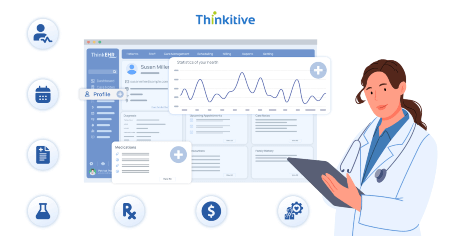
7 Key Features to Have in Custom EHR Software 2025
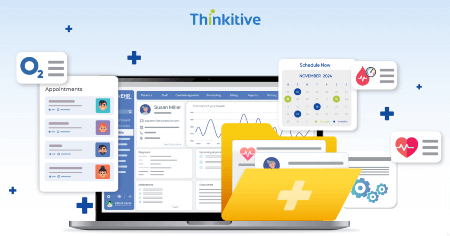
The Basics of Custom EHR – What Does EHR Stand For?
